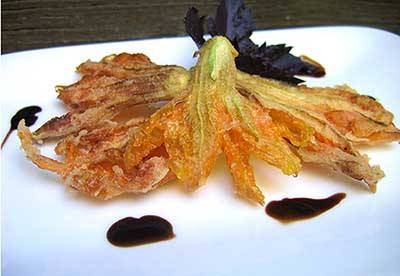 Come August in the Midwest, you sometimes have to watch your step when walking out the back door. Not because a neighborhood dog might have left you a present, but because an overly ambitious neighborhood gardener may have left you something some consider worse: a bag of zucchini.
Come August in the Midwest, you sometimes have to watch your step when walking out the back door. Not because a neighborhood dog might have left you a present, but because an overly ambitious neighborhood gardener may have left you something some consider worse: a bag of zucchini.
By August, everyone is up to their necks in squash and tomatoes. And while you can usually find someone to adopt extra tomatoes, squash doesn’t find nearly as many takers. And it’s no wonder, depending upon how often you pick them and the variety, a single squash plant can yield anywhere from 16 to 100 fruits. This means that everyone already has plenty of squash whether they are growing it or not.
On our farm, my mother attempted to solve the problem by hiding zucchini in everything from lasagna to chocolate cake. While the lasagna got a thumbs up, the cake didn’t fool us.
Zucchini bread is the classic way to use up extra zucchini and there are lots of recipes for it. Some of the better ones include a pinch of clove for balance. While this one doesn’t have cloves, it does have a good spice mix and produces a less oily, and less sweet loaf, which will freeze well.
There also are savory versions like this one for Zucchini Basil muffins from Bernard Clayton’s New Complete Book of Breads.
While you are grating zucchini for bread, grate some extra and freeze it. Just be sure to measure out the quantities you will need before popping the bag in the freezer or you will find yourself chipping away at a big block of frozen zucchini come January. No freezer? Dry it. You can dry thinly sliced and or shredded zucchini in a food dehydrator or in your oven. Just add water to rehydrate it and add it to soups and breads later this winter.
In the meantime, here are some other strategies for getting through squash season and still liking squash at the end of it, whether you are on the growing end of the equation or the receiving end.
If you are receiving squash, you can use a vegetable peeler to make zucchini “noodles,” that you can throw into pasta at the last minute of cooking. Saute some garlic in a little olive oil and toss the noodles and squash in. Season with salt and pepper and call it done. If you have a few more minutes, add some grated Parmesan and some thinly sliced basil leaves.
One of the more decadent ways my mother pushed squash on us, was to fry a piece or two of bacon first. She would drain all but a couple of tablespoons of the bacon fat and sauté a mixture of thinly sliced summer squash and small onions, tossing it with parmesan and basil, and the crumbled bacon to finish. Okay, so the acorn doesn’t fall far from the tree, but how can you resist squash when it’s flecked with bacon, cheese, and fresh basil?
If you are on the growing end, steamed or grilled baby squash can minimize the volume of squash coming into your home. Of course, it may be wisest to prevent some of the squash from coming in the first place by eating the female blossoms, the ones with the bulbous interiors. Pick them before they get squash growing behind them. You can use squash blossoms in ravioli or fry them like the Italians do.
Tempura batter allows the delicate flavor of the blossoms to come through. Be careful handling the blossoms as they are very fragile. Tempura traditionally uses rice flour to keep things crisp, but since wheat grows closer and corn, closer still, here’s a more local version:
Fried Squash Blossoms
- 1/4 c all purpose wheat flour
- 2 T corn starch
- pinch of salt
- 1/4 c club soda
Regardless of which batter you choose, you will need to heat a couple of inches of oil to at least 350 degrees, ideally 400, in small heavy pan or in a small deep fat fryer.
When the oil is ready, dip the blossoms in the batter and fry until golden brown. The blossoms should be able to float freely in the oil while cooking. While this will limit the number you can cook at once, it will keep the frying temperature up so that they don’t take on a lot of oil.
Drain on a cookie rack placed inside a cookie sheet. Serve immediately with a splash of balsamic vinegar or a mixture of 2 parts soy to 1 part lemon juice.








